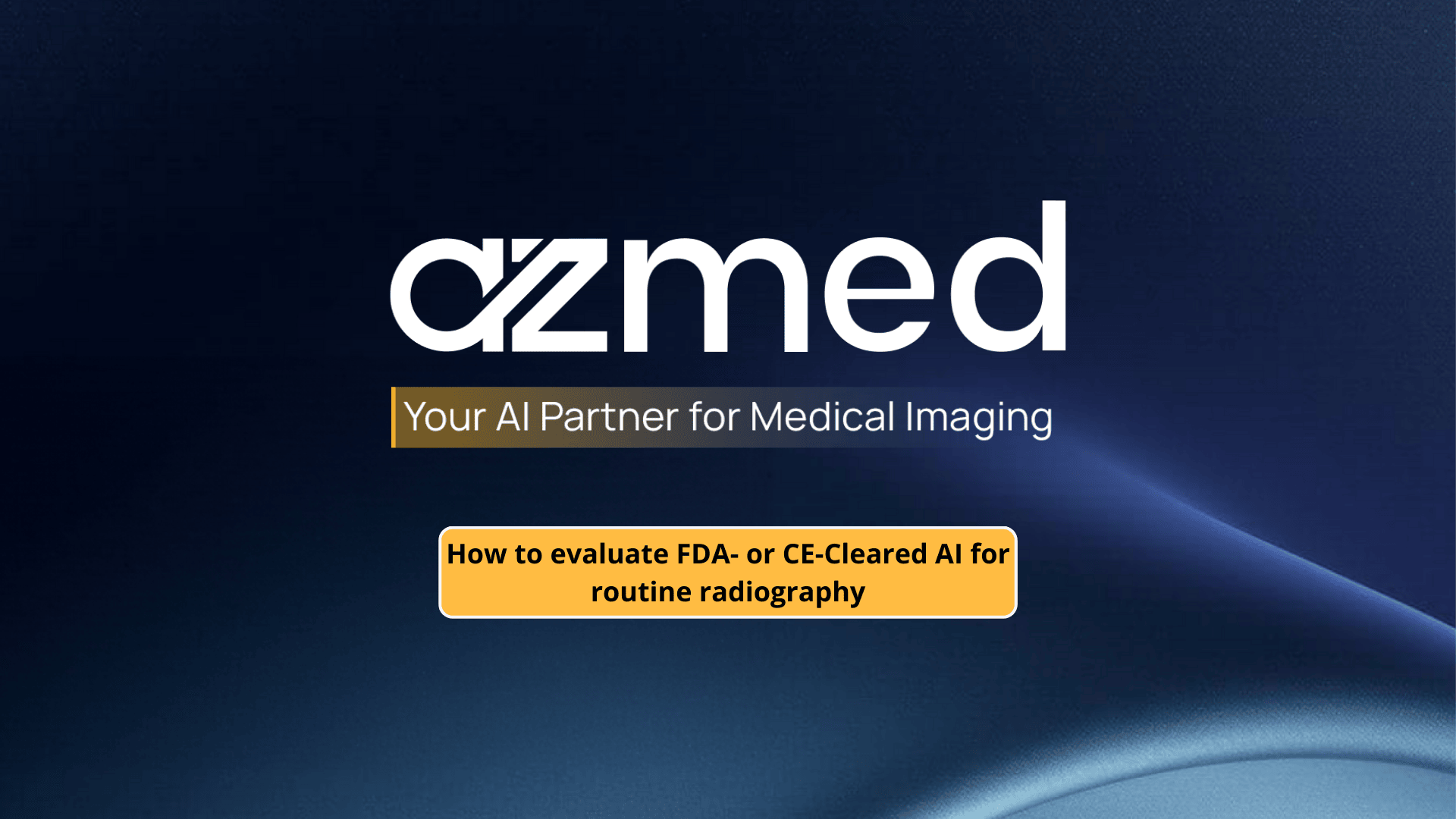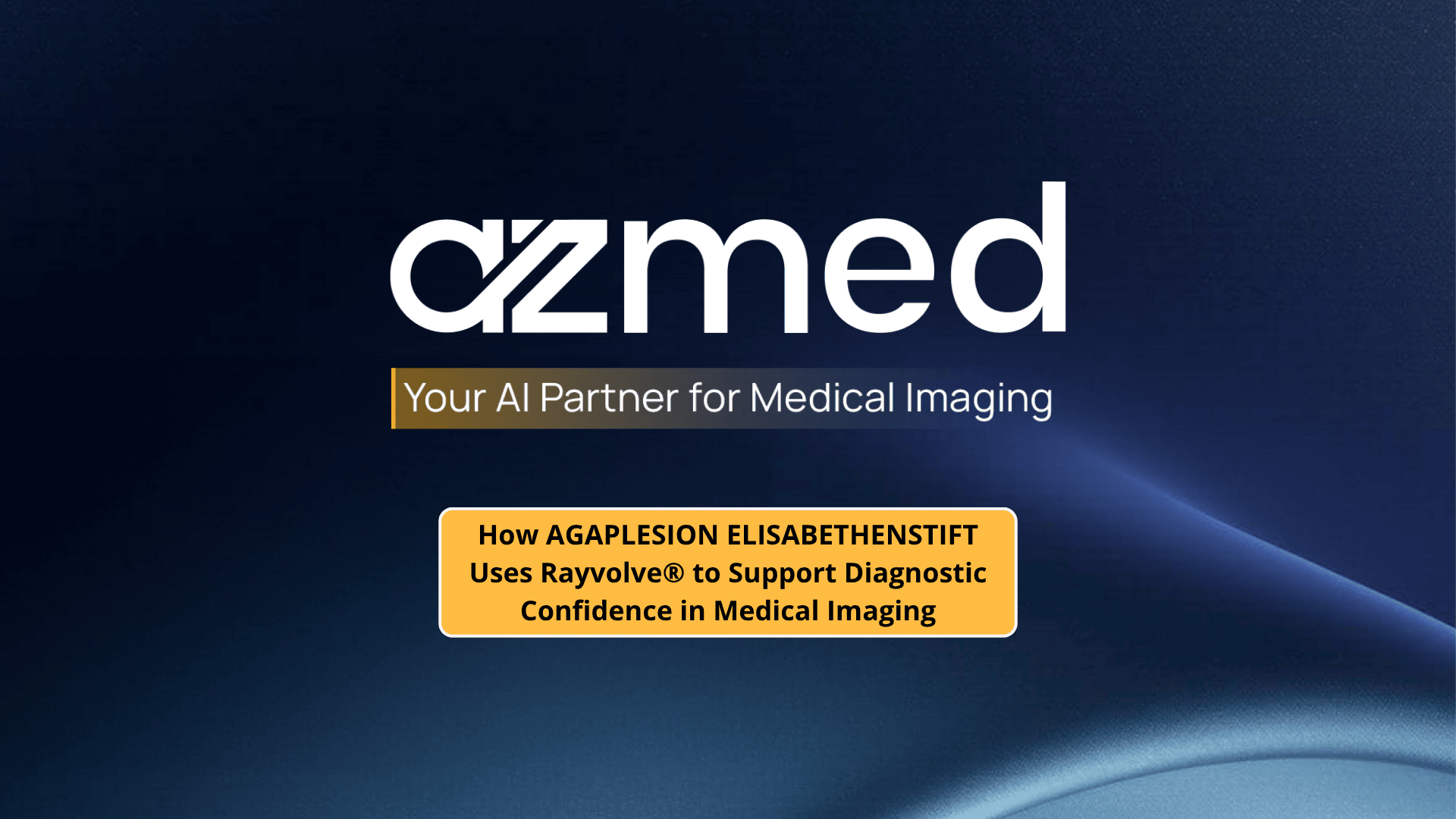Artificial intelligence (AI) in radiology is being evaluated in a manner that has not taken place before, as the volume of studies continues to rise and imaging departments are inundated with requests to complete reports quickly and accurately. Chest X-rays, trauma films, and pediatric bone X-rays continue to await reading with increasing frequency; often faster than they can be read. Radiology teams are expected to maintain accurate interpretations while also completing urgent cases in a timely manner to impact immediate clinical decision-making. However, fatigue, frequent distractions, and disconnected systems add to the likelihood of delayed reports and interpretation errors.
AI-enabled radiology tools, including AI for chest x-rays and AI for x-ray films that demonstrate fractures, complement the reading radiologist's skill set, by acting as a trained second reader. AI use in radiology prioritizes urgent cases over non-urgent cases and completes repetitive tasks that detract from reading time.
In this blog, we will present how this all plays out in real clinical environments, while demonstrating how AZmed’s Rayvolve® AI Suite helps radiologists maintain diagnostic accuracy and report cadence, even in busy and demanding practices globally.
How AI improves diagnostic accuracy in Radiology
The first key performance indicator (KPI) concerned with patient care and safety is accuracy, and it's the first KPI every radiologist is concerned with. In the emergency and trauma settings, simply overlooking one fracture or missing a pleural effusion can lead to consequences such as delayed treatment and worse patient outcomes.
In emergent situations, radiologists often live with the knowledge that they missed a subtle pathology due to fatigue or simply because of the volume of work they are going through.
AI radiology solutions can help detect subtle cases of pathology, among other things, with sensitivities and specificities that human fatigue or the sheer volume of work may otherwise prevent clinicians from identifying.
For example, AZtrauma is a leading AI radiology solution that is presented within the Rayvolve® AI Suite; it draws upon a large and unique dataset for training. It has been shown to accurately detect fractures, dislocations, and effusions with an AUC of 89% and a negative predictive value of 99.7% which decreased false negative readings by 67%.
And what that means is that fewer cases will slip through the diagnostic workflows, oftentimes in the overnight shifts, when radiologists may be fatigued.
AZchest*, another validated AI radiology tool, automatically marks and categorises major cardiothoracic abnormalities: lung nodules, rib fractures, cardiomegaly, consolidation, pleural effusion, pneumothorax, and pulmonary oedema.
Radiology AI solutions that standardize detection reduce inter-reader variability from radiologist to radiologist. This creates a consistent and dependable path for diagnosis – ensuring all radiologists and patients receive a better quality of care.
How AI in Radiology speeds report turnaround time
Speed without accuracy has minimal clinical value because patients continue to suffer if errors delay the appropriate care. Similarly, accuracy that shows up hours later could mean the opportunity to treat that patient has passed.
Using speed and accuracy together allows radiologists to treat the patient on time as well as to make the right decisions when it matters most.
AI-based triage plays a critical role in this process. In a mixed workload where there is a high volume of routine studies, urgent cases could be buried by the volume of routine cases. AI uses previous patient data to appropriately flag high-priority cases to radiologists so they can read those specialized cases immediately following routine cases. An example is AZtrauma flagging suspected fractures as high priority cases for radiologists to read. In a clinical context this decreased turnaround time for trauma patients by 83%.
“Thanks to its results, our radiologists can significantly speed up their overall reporting while simultaneously increasing its accuracy. We therefore consider it our AI-based second opinion, which boosts our overall quality and performance.” says Henrik Michaely, Owner and Chief Radiologist at MVZ Radiologie Karlsruhe.
AZchest has also demonstrated similar increases in efficiency, with reading times for chest X-rays reduced by up to 35.8%. However, tools like AZmeasure and AZboneage, which are part of the Rayvolve® AI Suite, can automatically calculate osteo-articular lengths and angles, and estimate bone age in pediatric patients (based on Greulich & Pyle) in seconds.
Linking speed and accuracy in AI radiology workflow for better outcomes
The intersection of speed and accuracy is where AI radiology has the most value. A system that speeds up report turnaround time but increases error is a liability; a system that increases accuracy but slows down the imaging teams is problematic.
In practice, integrated AI can do both:
- Flagging urgent cases for immediate review.
- Providing reliable decision support that reduces missed findings.
This lets radiologists make urgent diagnoses quickly and correctly, protecting both patient care and departmental performance metrics.
The next question is whether these improvements hold up under real-world clinical practice: when the worklist is full, patients are coming in, and every second counts. That’s where workflow integration makes or breaks the benefits of AI.
Why workflow integration matters when using AI in radiology
The best AI radiology tool will still fail if it interrupts existing workflows. Radiology departments use well-tuned PACS and RIS systems, so any AI tool that adds several clicks or requires dealing with more than one platform can potentially become a hindrance to expediting clinical practice.
This is the reason that we made sure to build AZmed’s Rayvolve® components directly into, and in many instances, with zero-click functionality, existing systems.
This means cases will show up in the worklist already prioritized and annotated with measurements that are presented in the DICOM viewer, which helps mitigate the perceived stress of implementation and adoption from healthcare facilities, while ensuring that any efficiency gains or improvements will end up in a real turnaround time improvement.
How AZmed delivers measurable gains in diagnostic accuracy and report turnaround for radiologists
Achieving both high diagnostic accuracy and rapid report turnaround requires AI that is clinically validated, regulatory approved, and designed for real hospital conditions.
AZmed’s Rayvolve® AI Suite, including AZtrauma, AZchest, AZmeasure, and AZboneage, is in use at more than 2,500 healthcare facilities worldwide. Its performance is backed by scientific evidence and day-to-day use in busy radiology departments.
For department heads and senior radiologists, these tools are part of daily work. Hospitals using them are reading more studies without stretching staff to breaking point, keeping diagnostic quality high even on the busiest days.
In practical terms, that translates into:
- Catching more issues on the first read
- Moving urgent care patients to the right treatment sooner
- Easing bottlenecks that slow the whole department down.
Want to see how these tools can fit into your workflow too? Book a demo to explore the Rayvolve® AI Suite. See how it can help your department meet both accuracy and turnaround targets without disrupting your current systems.
Regulatory mentions:
EU - Rayvolve: Medical Device Class IIa in Europe (CE 2797) in compliance with the Medical Device Regulation (2017/745). Rayvolve is a computer-aided diagnosis tool, intended to help radiologists and emergency physicians to detect and localize abnormalities on standard X-rays.
* AZchest is CE-marked for detection of abnormalities on chest X-rays such as: consolidation, pleural effusion, pneumothorax, cardiomegaly, acute pulmonary edema, ribs fractures and pulmonary nodules. It’s also FDA-cleared for two applications: detection of lung nodules (with Rayvolve LN) and notification and triage for pneumothorax and pleural effusion (with Rayvolve PTX-PE)
US - Medical device Class II according to the 510K clearances. Rayvolve: is a computer-assisted detection and diagnosis (CAD) software device to assist radiologists and emergency physicians in detecting fractures during the review of radiographs of the musculoskeletal system. Rayvolve is indicated for the adult and pediatric population (≥ 2 years).
Rayvolve PTX/PE: is a radiological computer-assisted triage and notification software that analyzes chest x-ray images of patients 18 years of age or older for the presence of pre-specified suspected critical findings (pleural effusion and/or pneumothorax).
Rayvolve LN: is a computer-aided detection software device to assist radiologists to identify and mark regions in relation to suspected pulmonary nodules from 6 to 30mm size of patients of 18 years of age or older.
Caution: The data mentioned are sourced from internal documents, internal studies and literature reviews. Carefully read the instructions for use before use.
AZmed 10 rue d’Uzès, 75002 Paris - www.azmed.co - RCS Laval B 841 673 601
© 2025 AZmed – All rights reserved. MM-25-26



